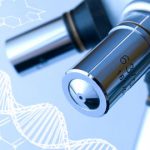 Research has revealed two previously unidentified cellular players in the pathogenesis of primary Sjögren’s syndrome (pSS): a regulatory T cell (Prdm1+eTreg) and a helper T cell (Il21+Th1). Scott Haskett, MSc, a scientist at Biogen in Cambridge, Mass., and colleagues published the results of their research in NOD mice and patients with pSS online on Oct. 7 in the Journal of Immunology.1
Research has revealed two previously unidentified cellular players in the pathogenesis of primary Sjögren’s syndrome (pSS): a regulatory T cell (Prdm1+eTreg) and a helper T cell (Il21+Th1). Scott Haskett, MSc, a scientist at Biogen in Cambridge, Mass., and colleagues published the results of their research in NOD mice and patients with pSS online on Oct. 7 in the Journal of Immunology.1
“Advancing our knowledge of the pathogenic cell subsets infiltrating exocrine glands in pSS patients has been limited by the low dimensionality of traditional histology techniques and the limited number of cells available for single-cell analyses in lip biopsy samples,” write the authors in their discussion. “In this study, we took advantage of the NOD model of pSS, which displays extensive immune infiltration in LGT [lacrimal gland tissue] that is accompanied by the upregulation of 58% of the human pSS transcriptional signature. In inflamed LGT from this model, we identified a population of Tregs as the most abundant CD4+ T cell subset, accounting for up to 50% of the entire population at the peak of immune infiltration.”
The investigators began their work with an integrated analysis of publicly available mouse and human pSS datasets, from which they identified an upregulated transcriptional gene signature. “To better define the phenotype of infiltrating cells, we next isolated LGT CD4+ T cells, as well as their splenic counterparts, from 16-wk-old NOD mice,” explain the authors. “To account for any transcriptional changes caused by LGT processing that would affect all cells, irrespective of their cellular identity, we also isolated B cells from the same tissue.” They then identified the subsets of T cells that contributed to the LGT CD4+ T cell pool.
The researchers purified the LGT-infiltrating T cell subsets and performed gene-expression analyses to characterize their cellular and molecular identities. The transcriptional signatures and transcription factor profiles of the PD1high ICOShigh T cell subsets allowed the investigators to further refine the transcriptional identity of these subsets. The Il2l+ Th1 cells were defined by Pd1highICOShighCD73highCd200high phenotype and high expression of Ifng, Thx21, Tnf and IL2. These cells were not only found in the NOD mouse model of pSS, but also in salivary gland biopsies from patients with pSS. In contrast, the investigators did not find the cells in normal salivary glands or kidney biopsies from patients with lupus nephritis. The team also noted that the cells had transcriptional similarity with a different CD4+ T cell subset that had been described in lupus-prone B6.Sle1b and BWF1 mouse models. Thus, the transcriptomes from effector and regulatory subsets identified in the LGT from NOD mice were not unique to the tissue or disease model.
